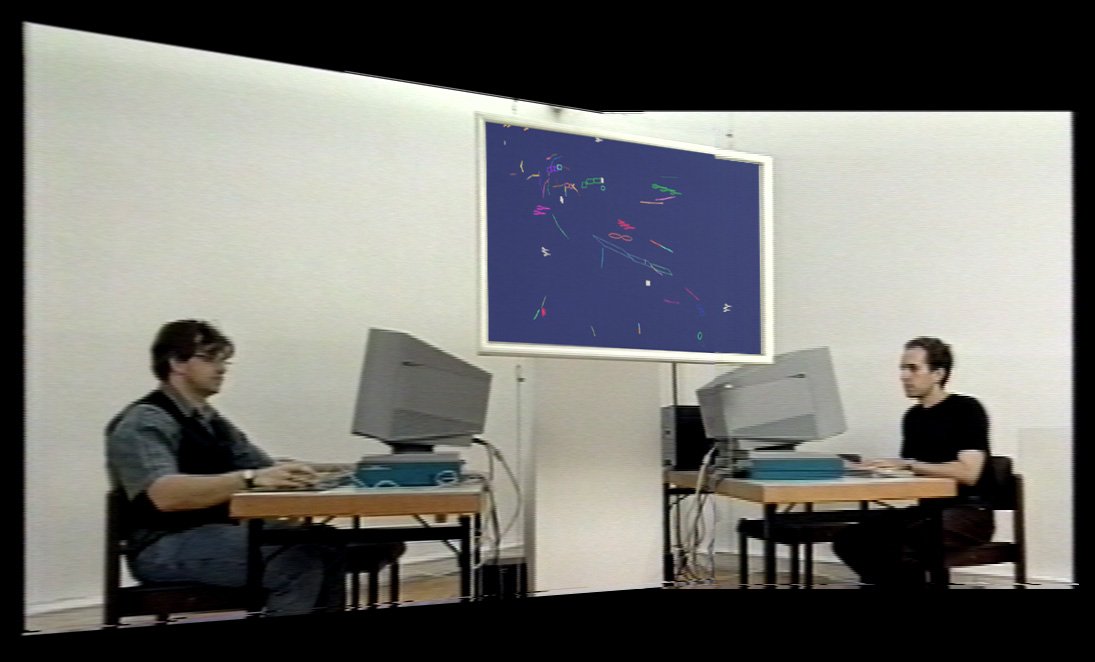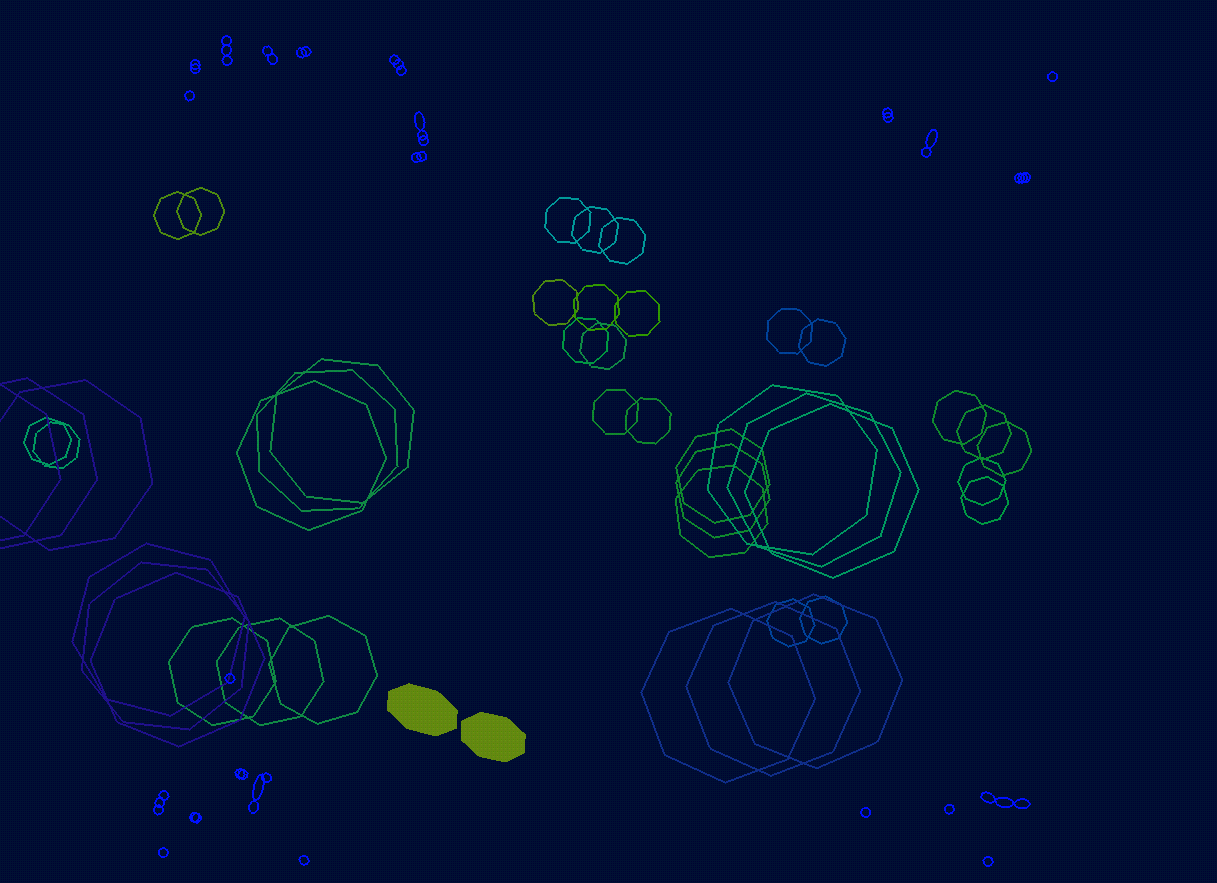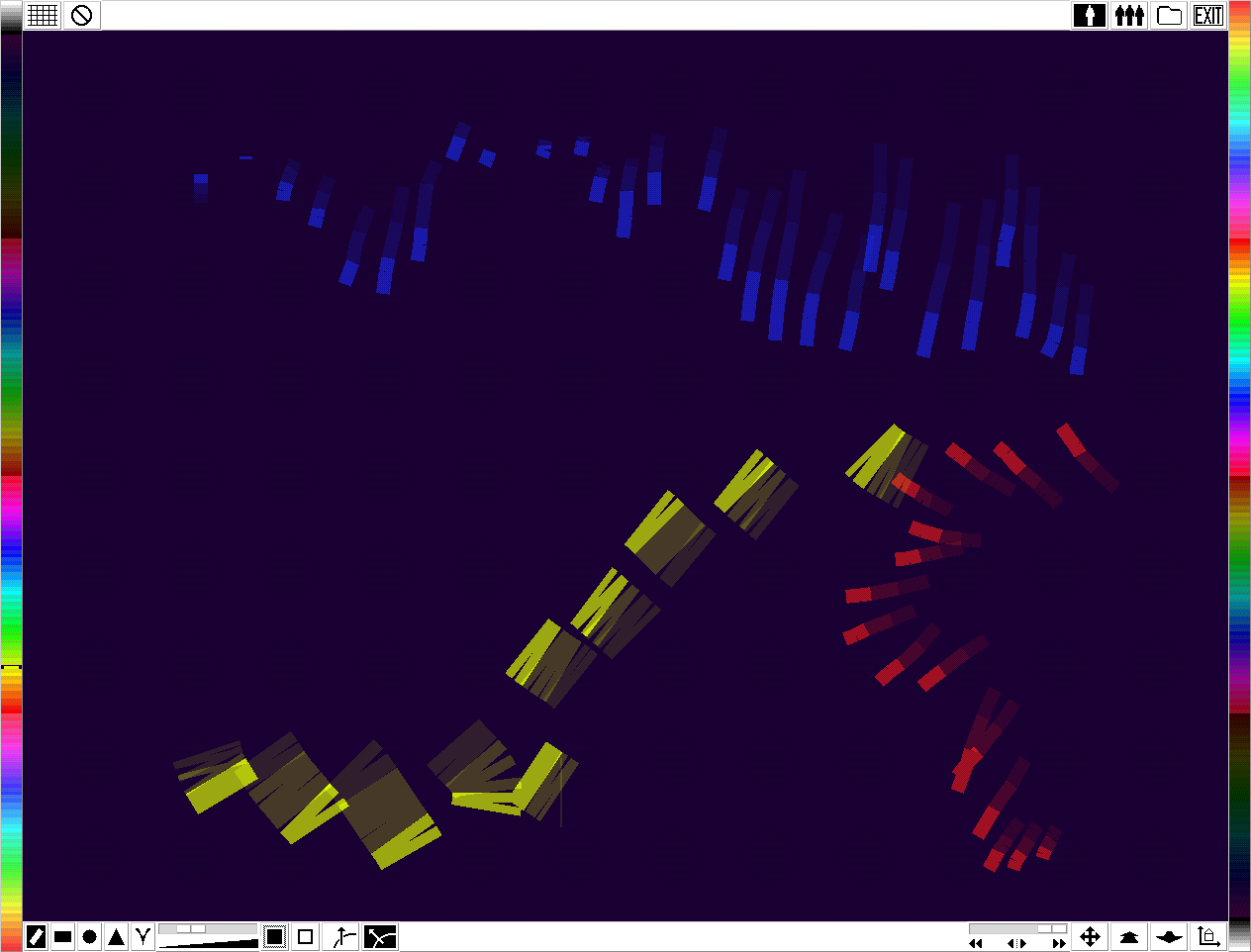MOTION PHONE (1995)
Motion Phone at Ars Electronica, 1996
Motion Phone is now an iPad and iPhone App
Motion Phone (1989-1996) evolved out of an exploration of how to make cinema with one's body. In film school at RISD, I had been inspired by two experimental animation pioneers. The first, Oskar Fischinger, pioneered a cinema of pure abstraction. His earliest films are simple black and white forms, drawn frame-by-frame in charcoal. Yet the resulting movements, such as in Study Number 7 (1931), have incredible emotional power. The second pioneer, Len Lye, pioneered "direct cinema," created by marking directly on the film surface with pens, inks, or by scratching emulsion off of black leader, as in his masterpiece Free Radicals (1957).
I was searching for a way to make a hard-edged abstraction like Fischinger's by using my body directly as Lye did. In an epiphany one evening staring at the computer, I realized that the cursor was the most interesting object on the screen. Here was the only place that my body, through the mouse, came into the computer. Based on this understanding, I created Motion Sketch, which attaches the movements of ones hand to the movements of abstract forms. These forms exist in a short one-second loop. The temporal complexity comes from the continuous layering of these forms, creating a rich motion painting.
Motion Phone (1995) is a networked version of Motion Sketch. With this software, multiple computers, networked via the Internet, communicate together, working simultaneously in the same dynamic canvas. As an experiment in abstract visual communication, this enforces a few social rules. Instead of a fixed size canvas, Motion Phone provides an infinitely zoomable plane. Multiple ""conversations"" can take place at any position or scale within this virtual world. However, this results in a perceptual problem – each performer cannot be certain what the other is looking at. Similarly, performers have independent control of frame rate. If one person sets their frame rate low, they can seem to run circles around the other, creating at miraculous speed and with incredible temporal precision. Each performer can only erase his own work, and one can also choose to not display anyone else’s work if privacy is desired. However, the background color is set to the last person’s choice so that there is at least one thing to fight over: changes to background color are instantaneous and startling.
By working with a loop, the problem of communication latency becomes irrelevant. The one-second loop continues over-and-over for each viewer, and new material from other viewers appears whenever it arrives. As long as new material arrives within a few seconds of its creation, all the creators have the sense of the lively progress of a shared dynamic canvas.
Motion Phone at SIGGRAPH 1995
Motion Sketch at Brown University, 1989-1994
SELECTED EXHIBITIONS
Siggraph 1995 Art Show, Los Angeles
Ars Electronica 1996, Prix Ars Electronica Bronze Award, Austria
Vienna Global Village 1996, Austria
WRO 1997, Poland
Stuttgart Filmwinter 1998, Germany
…
Produced and presented with support from Adobe Systems, Silicon Graphics, and SIGGRAPH








